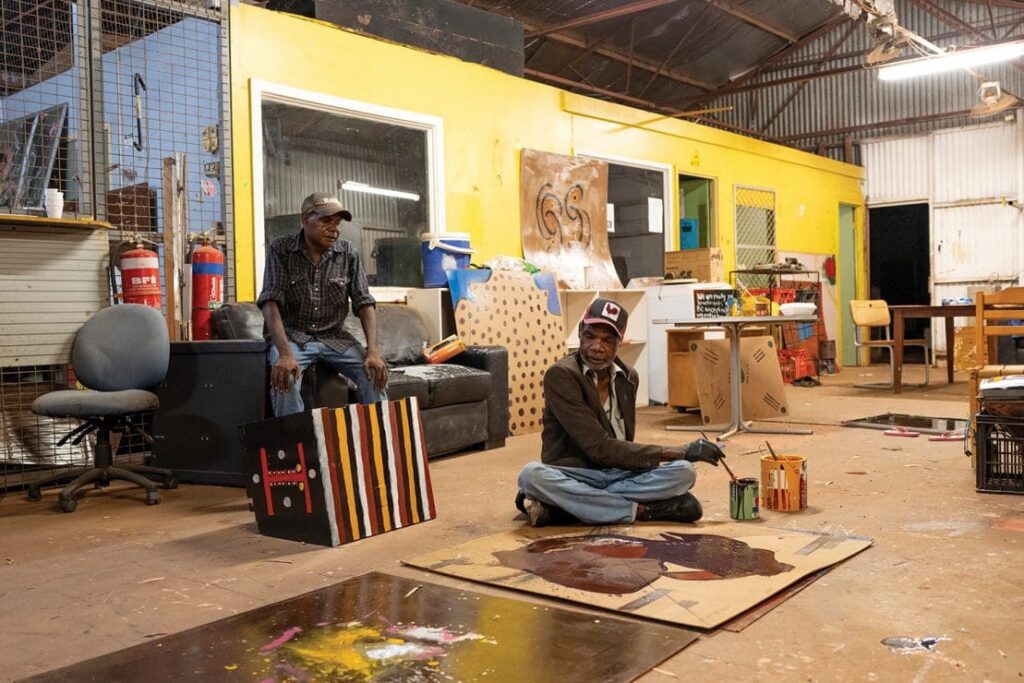Tennant Creek Brio
The Tennant Creek Brio is an energetic, experimental, and transformative indigenous collective whose work is a dynamic fusion of traditional and contemporary influences. These include Aboriginal desert traditions, abstract expressionism, action painting, found or junk art, street art, and art activism. The collective’s spirit is rooted in a deep commitment to challenging norms, drawing inspiration from both their cultural heritage and a broad range of contemporary artistic movements. Their unique approach creates a powerful dialogue between traditional and modern influences, producing art that resonates with both personal and collective significance.
Based in the small town of Tennant Creek (population 3,200) in the Northern Territory of Australia, the collective emerged in 2016 as part of an Aboriginal men’s art therapy program at Anyinginyi Aboriginal Health Organisation. This initiative aimed to support men struggling with alcohol and substance misuse. Led by artist Rupert Betheras and supported by fellow artists Fabian Brown and Joseph Williams, the collective quickly gained popularity within the local community. Over time, the group expanded its membership to include Marcus Camphoo, Simon Wilson, Lindsay Nelson, and Clifford Thompson, along with occasional members and collaborators. By 2018, the art therapy program had moved to the Nyinkka Nyunyu Art and Culture Centre in Tennant Creek, where artist Jimmy Frank also joined the collective.
The members of the collective each bring their unique experiences to their work. Williams learned carving from his grandfather, while Wilson developed an interest in painting as a teenager. Betheras, influenced by Melbourne’s 1980s graffiti subculture, also shares a rebellious streak that challenges the status quo. Together, the artists work collaboratively, often shifting and evolving each other’s pieces, blending their individual practices into a unified, collective expression. The Tennant Creek Brio has become a strong cultural and social voice, using art to reflect the challenges of life in a frontier town marked by the ongoing impacts of colonization. Their use of found materials, like disused metal and abandoned mine site plans, adds a layer of potency to their commentary on outsider status and the struggle to maintain cultural identity.

City
Country
Region
Year of Creation
Featured Project

IMPORTANT: Profile pages for all collectives are in permanent development and have been built using information in the public domain. They will be updated progressively and in dialogue with the organizations by the end of 2024. New features and sections will be included in 2025, like featured videos, and additional featured projects. Please contact us if you discover errors. For more information on mapping criteria and to submit your organization’s information to be potentially included in the database, visit this page

